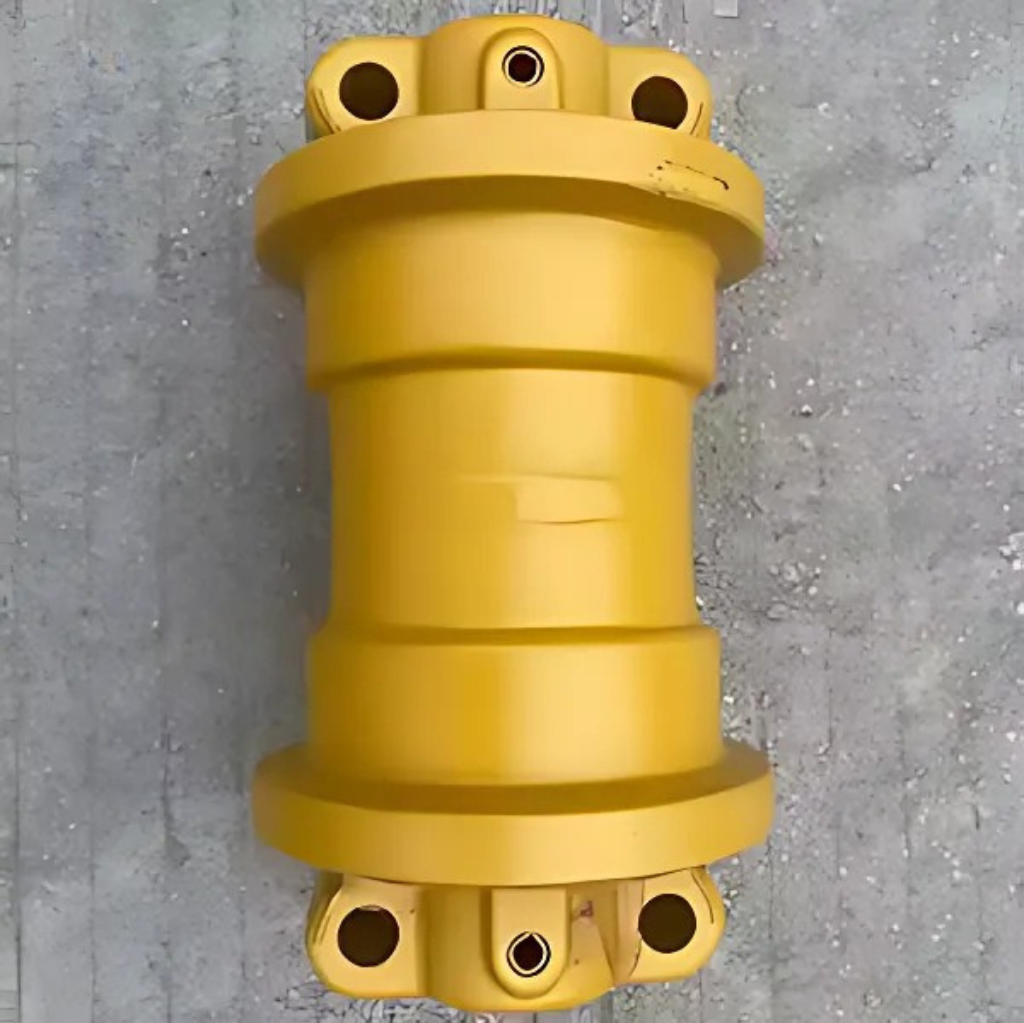
The excavator lower roller in India, or track roller, is a key undercarriage part that supports the machine’s weight and guides the track chain. Located under the track frame, it ensures smooth movement, stability, and even load distribution. Built from high-strength steel and sealed for durability, lower rollers reduce friction and wear, extending the life of the undercarriage. Their reliability directly affects traction, stability, and overall machine performance in tough working conditions.
An excavator lower roller (or bottom roller) is a vital undercarriage part that supports the machine’s weight and guides the track chain. Located beneath the track frame, it keeps the excavator stable and ensures smooth movement across rough terrain.
Built from high-strength steel with heavy-duty seals, lower rollers withstand constant impact, friction, and debris. Their role is to distribute weight evenly, reduce vibration, and keep tracks aligned—helping the machine run efficiently while minimizing wear and downtime.
Lower rollers sit at the bottom of the track frame and carry the entire machine’s weight, transferring it evenly onto the track chain. They guide the tracks on the ground, provide stability, and improve traction. Because they’re under constant load and exposed to mud, rocks, and debris, they wear out faster and need regular maintenance.
In contrast, carrier rollers on top of the frame simply keep the track chain aligned and prevent sagging. While carrier rollers guide, lower rollers do the heavy lifting—making them critical for smooth movement, balance, and undercarriage life.
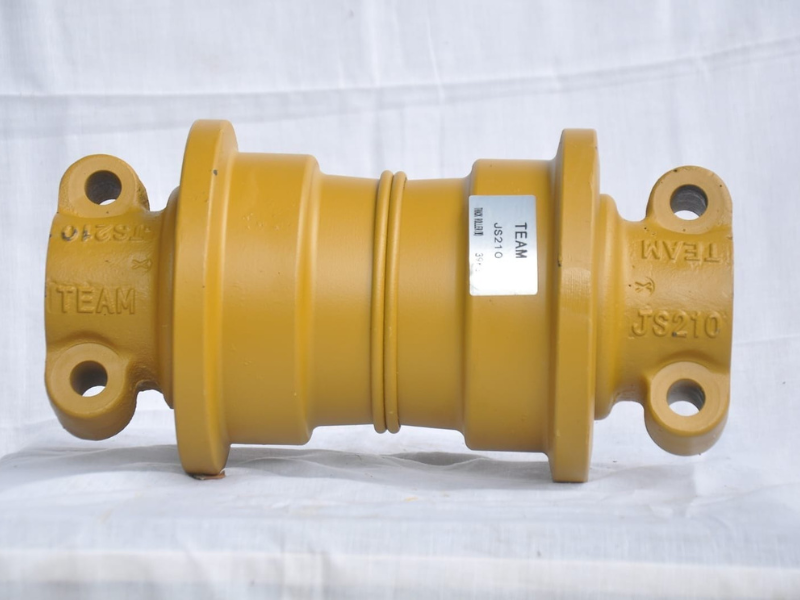
Construction:
Lower rollers (track rollers) are built from forged/cast alloy steel with heat-treated surfaces to resist wear. They use sealed, lubricated systems with heavy-duty floating seals to keep out dirt and moisture. Inside, hardened shafts and bushings reduce friction, while flanges guide the track chain and prevent derailment.
Roller Types:
Single-Flange Rollers – Lighter, used on small to mid-sized excavators; suitable for general conditions.
Double-Flange Rollers – Stronger guidance on both sides; ideal for heavy-duty or rocky, uneven terrain.
Lower rollers, or bottom rollers, are essential to an excavator’s undercarriage, ensuring smooth movement and stability.
Weight Support – They carry the machine’s heavy load, distributing it evenly across the track to prevent damage and reduce wear.
Smooth Movement – By guiding the track chain, they minimize friction and allow efficient power transfer for forward or reverse travel.
Lower rollers support the track chain and keep the excavator stable. With time, they wear down due to constant ground contact. Spotting early signs prevents bigger undercarriage issues.
Flat spots or pitting on the roller surface
Oil leaks from damaged seals
Grinding or clunking noises while moving
Excessive vibration or rough travel
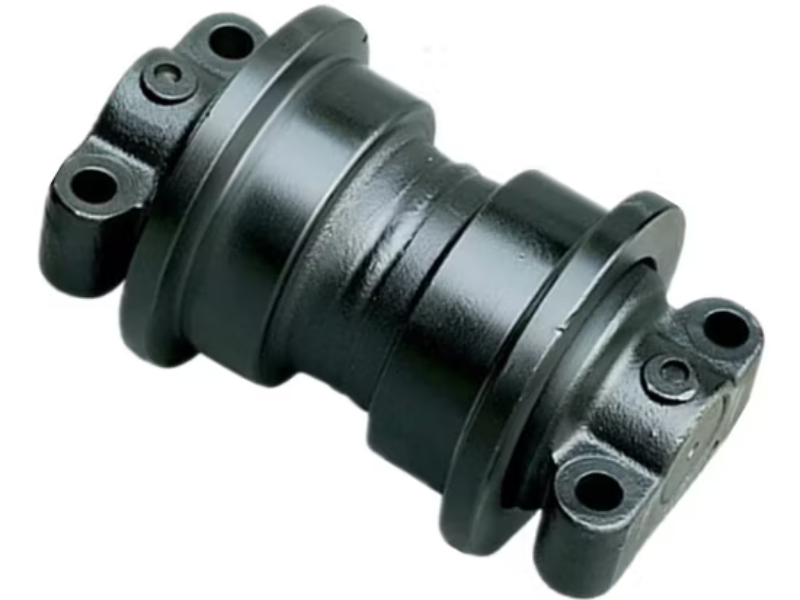
Clean regularly – Remove mud, rocks, and debris to prevent wear and seal damage.
Check oil & leaks – Keep rollers properly lubricated and watch for seal failures.
Monitor alignment – Ensure rollers rotate freely without wobbling or uneven wear.
Lower rollers share the load across your excavator’s tracks, so uneven wear can quickly affect balance and damage other undercarriage parts. Replacing all rollers at once ensures even stress distribution, fewer breakdowns, and longer system life.
If your machine is heavily used, a full replacement is more cost-effective. For lighter use or when only one roller fails due to a defect, replacing a single roller may be fine.
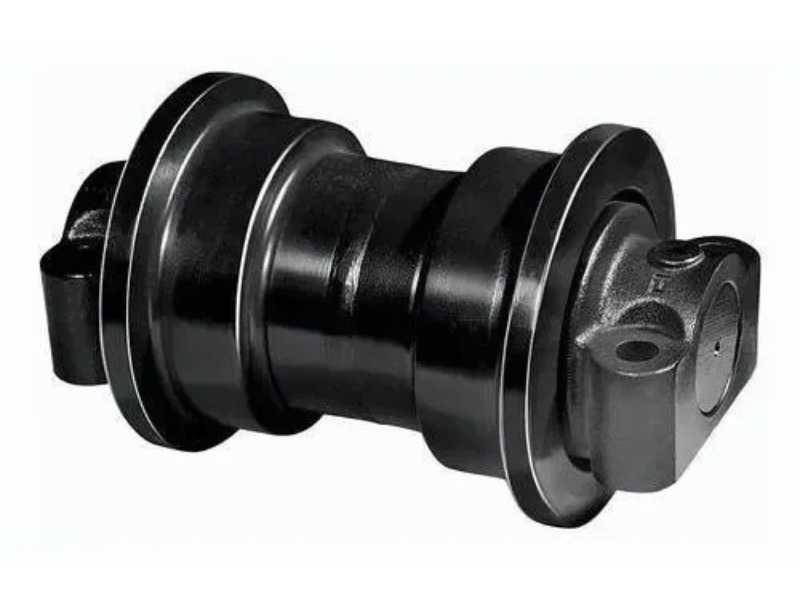
Selecting the correct lower roller for your excavator is crucial to ensure smooth operation, long service life, and minimal downtime. Since lower rollers carry the full weight of the machine while guiding the track chain, using the wrong type or poor-quality roller can lead to premature wear, excessive vibration, and costly repairs. Here are the key factors to consider when choosing the right lower roller:
Every excavator model has specific requirements for track rollers. Always verify the roller dimensions, mounting style, and alignment with your machine’s undercarriage design. Using rollers not designed for your excavator may cause misalignment, uneven track wear, or damage to the track frame.
High-quality excavator lower rollers play a vital role in keeping machines efficient and reliable.
Stability & Control – Distribute weight evenly for smooth operation on rough terrain.
Extended Track Life – Prevent uneven wear, protecting costly track chains and shoes.
Durability – Built with hardened steel and superior seals to handle heavy loads and harsh conditions.
Q1. What is a lower roller?
It’s an undercarriage part that supports the excavator’s weight and guides the track chain for smooth movement.
Q2. How is it different from an upper roller?
Lower rollers carry the machine’s weight, while upper rollers just support the top section of the track.
Q3. When should I replace my lower roller?
Replace if you notice track misalignment, unusual noise, vibration, cracks, oil leaks, or uneven wear.
Q4. How long does a lower roller last?
Typically 2,000–4,000 hours, depending on work conditions and maintenance.
Q5. Can bad rollers damage other parts?
Yes, worn rollers can harm the track chain, sprockets, and idlers.
Q6. How do I extend roller life?
Keep tracks at the right tension, clean the undercarriage, and check rollers regularly..
Q7. Are aftermarket rollers reliable?
Good-quality aftermarket rollers can perform like OEM if sourced from trusted suppliers.
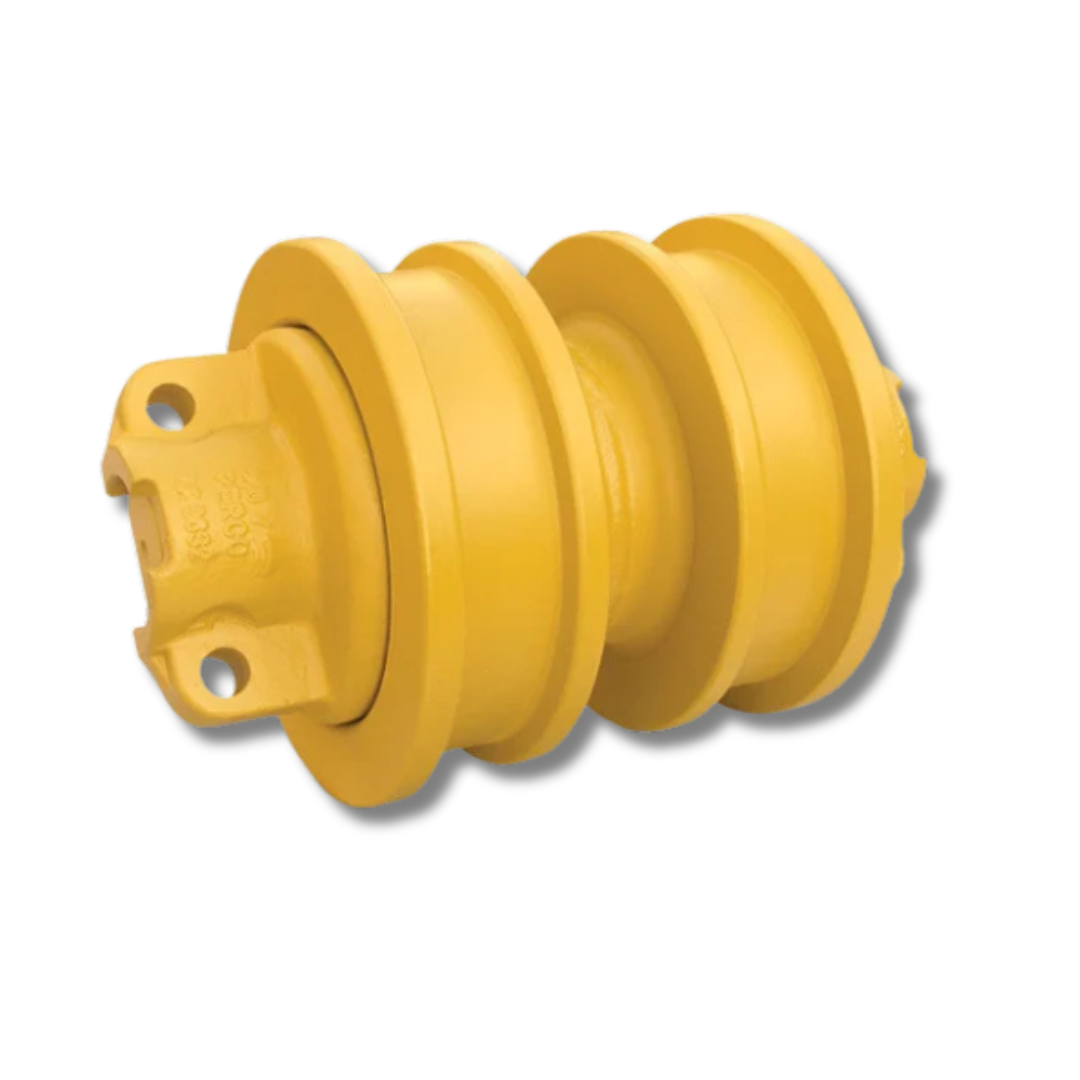
Excavator Rock Bucket | Excavator Skeleton Bucket | Excavator Trapezoidal Bucket | Excavator Soil Bucket | Excavator Loader Bucket | Excavator Single-Shank Ripper | Excavator Triple-Shank Ripper | Excavator Track Link Assembly | Excavator Tooth Points | Excavator JCB Teeth & Side Cutter | Excavator Idler | Excavator Sprocket | Excavator Lower Roller | Excavator Undercarriage | Excavator Track Group | Excavator Bolts | Excavator Rock Bucket in Chennai | Excavator Skeleton Bucket in Chennai | Excavator Trapezoidal Bucket in Chennai | Excavator Soil Bucket in Chennai | Excavator Loader Bucket in Chennai | Excavator Single-Shank Ripper in Chennai | Excavator Triple-Shank Ripper in Chennai | Excavator Track Link Assembly in Chennai | Excavator Tooth Points in Chennai | Excavator JCB Teeth & Side Cutter in Chennai | Excavator Idler in Chennai | Excavator Sprocket in Chennai | Excavator Lower Roller in Chennai | Excavator Undercarriage in Chennai | Excavator Track Group in Chennai | Excavator Bolts in Chennai | Excavator Rock Bucket in India | Excavator Skeleton Bucket in India | Excavator Trapezoidal Bucket in India | Excavator Soil Bucket in India | Excavator Loader Bucket in India | Excavator Single-Shank Ripper in India | Excavator Triple-Shank Ripper in India | Excavator Track Link Assembly in India | Excavator Tooth Points in India | Excavator JCB Teeth & Side Cutter in India | Excavator Idler in India | Excavator Sprocket in India | Excavator Lower Roller in India | Excavator Undercarriage in India | Excavator Track Group in India | Excavator Bolts in India
TEAM. All Rights Reserved. Developed by Pixel Tech.